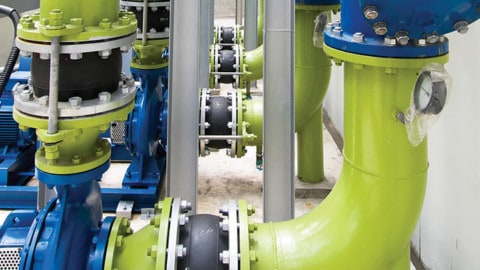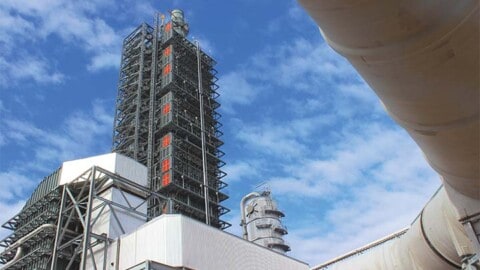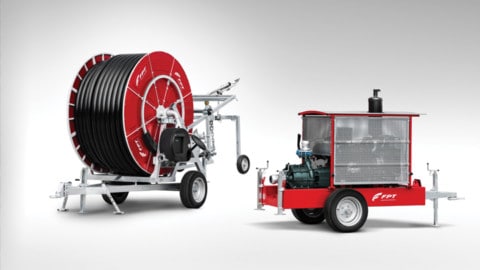by Paul Slatter, Principal Engineer, Rheology and Slurry Engineering, ATC Williams
One problem encountered in the designing of slurry pipeline systems with centrifugal pumps as prime movers is that of head and efficiency deration. The early research on this topic proved a pump Reynolds number is an effective method to predict pump performance for non-Newtonian slurries.
However, it is based either on the plastic viscosity only, or on an apparent viscosity, both of which present fundamental rheological problems. Our more recent research provides a new analysis based on the pump geometry and the yield pseudoplastic rheological model. Experimental data from centrifugal pump tests has been used to evaluate the proposed model.
The results show the new analysis being in good agreement with the trend observed by earlier work, with the former predicting a lower Reynolds number value at similar operating conditions. However, it is argued that the new pump Reynolds is more explicit and scientifically based. Poor correlation at low Reynolds numbers is still problematic, indicating that further development is required.
The design of slurry pipeline systems in which the slurry’s viscous stresses become dominant is a growing technology, and presents some extremely challenging technical problems. In these design cases, slurry rheology will dominate design and operation, and centrifugal pump performance prediction is a significant issue.
In particular, the determination and application of both the head and efficiency deration of a particular pump arguably becomes the most acute pipeline design concern.
Dynamic similarity has long stood as a classical engineering tool for solving fluid mechanics problems. For the concept to uphold between two systems, the ratio of any two forces must be the same at corresponding points of the two systems.
For the problem at hand, the ratio of inertial to viscous forces dominates flow behaviour, as expressed in the Reynolds number.
The standard Newtonian pump Reynolds number was used in early research on this topic to predict centrifugal pump performance for non-Newtonian materials. In this early work, the researchers described the fluid under investigation in terms of the Bingham plastic model. They found that head ratio with slurries could be correlated with the pump Reynolds number calculated using the apparent viscosity of the slurry being pumped, at a shear rate of two times the pump rotational speed for low flow conditions.
It was argued that at low flow conditions, the performance would be dominated by the viscous nature of the fluids. On the other hand, the performance would be dominated by the plastic or secant viscosity at high flow rates.
It should be noted that at high shear rates the plastic viscosity approaches the apparent viscosity. The head ratio is defined as the head when pumping a solid-liquid mixture divided by the head when pumping clear water at the same flow rate.
Early researchers expressed the head and efficiency ratios in terms of a pump Reynolds number which excluded the yield stress of the slurry being pumped. They argued that the pumping of these Bingham plastic slurries are essentially high velocity processes, which is certainly a reasonable assumption given the high tangential velocities that occur in the volute, but corroboration of their results at low Reynolds number is still desirable.
It is also interesting to note that the flow in the pump is not always as turbulent as these early researchers suggested. Indeed, further research found that for a pump Reynolds number less than about 104, laminar flow conditions are gradually established for the main flow, and the Reynolds number would not be fixed for any one pump.
On the basis of this information, the omission of the yield stress in Reynolds number model may well be questioned, since it is established that laminar flow conditions may prevail in pumps.
Furthermore, the Bingham plastic or secant viscosity is a fitting parameter with no independent rheological meaning, and calculating an apparent viscosity in the pump requires a representative shear rate to be defined, which still remains a matter of conjecture.
Thus, it becomes imperative to derive a generalised approach for the prediction of centrifugal pump performance for non-Newtonian fluids by means of a Reynolds number on the basis of all pertinent variables. Our research on this topic has been aimed at including all the design features of a pump along with the fluid rheological parameters in order to derive a general pump Reynolds number for non-Newtonian slurries.
The new analysis is in good agreement with the trend observed by earlier researchers, as well as our own experimental work, with the former predicting a lower Reynolds number value at similar operating condition.
However, it is suggested that our new pump Reynolds number be used, as it is more explicit and scientifically grounded with respect to the inclusion of all the parameters of the rheological characterisation of the slurry being pumped.
It is admitted that the accuracy of both models is still desirable at low values and further development of the new analysis needs to be undertaken.
Furthermore, it is to be hoped that the theoretical analysis established here will bring forth many detailed experimental results in complete form from various investigators, so that the conclusions drawn from this work may be either confirmed or modified to fit into a more general picture.
However, it is believed that this paper represents the first attempt to derive a pump Reynolds number on the basis of all pertinent variables so that individual influences can be isolated more easily.




















